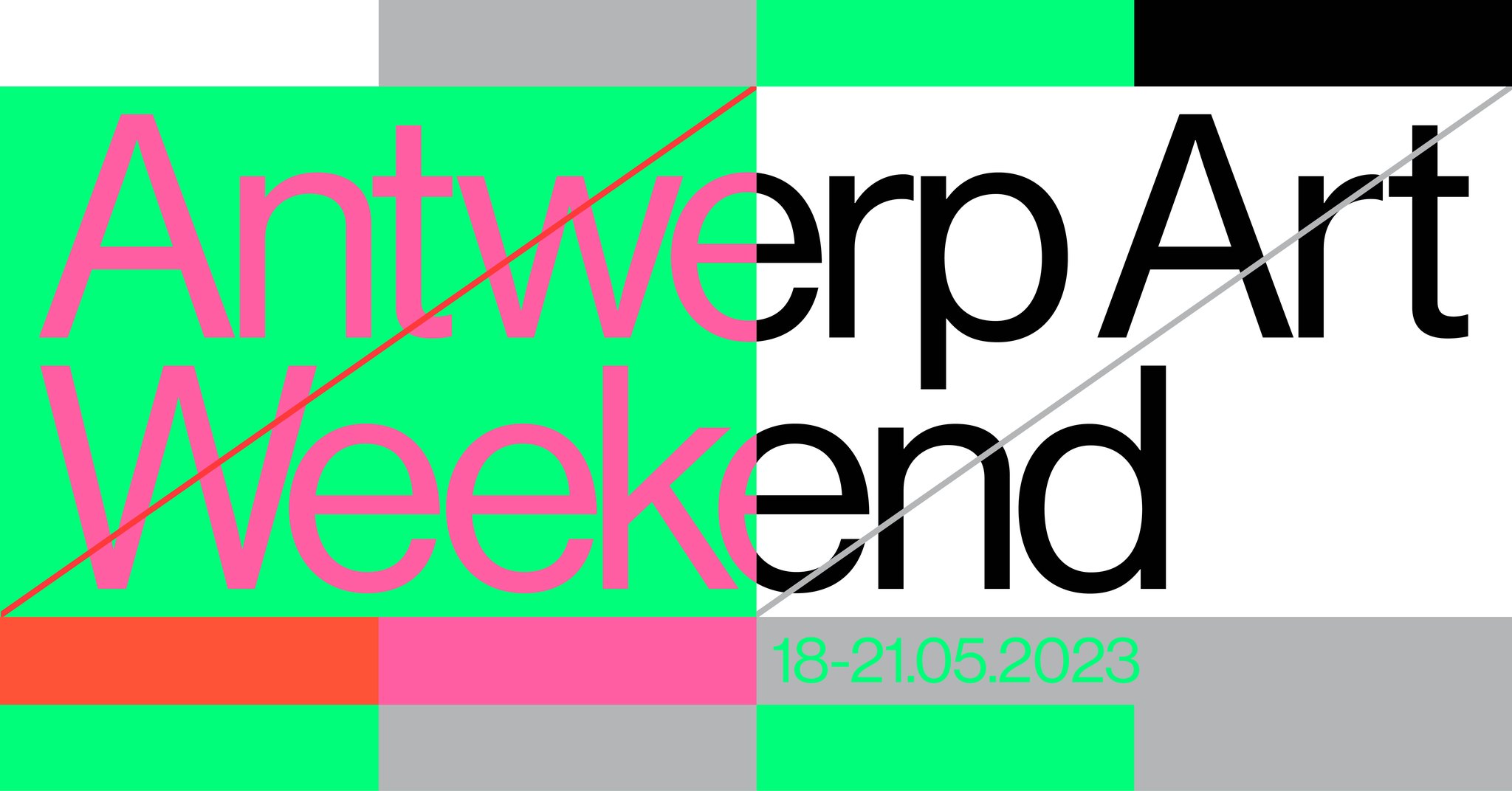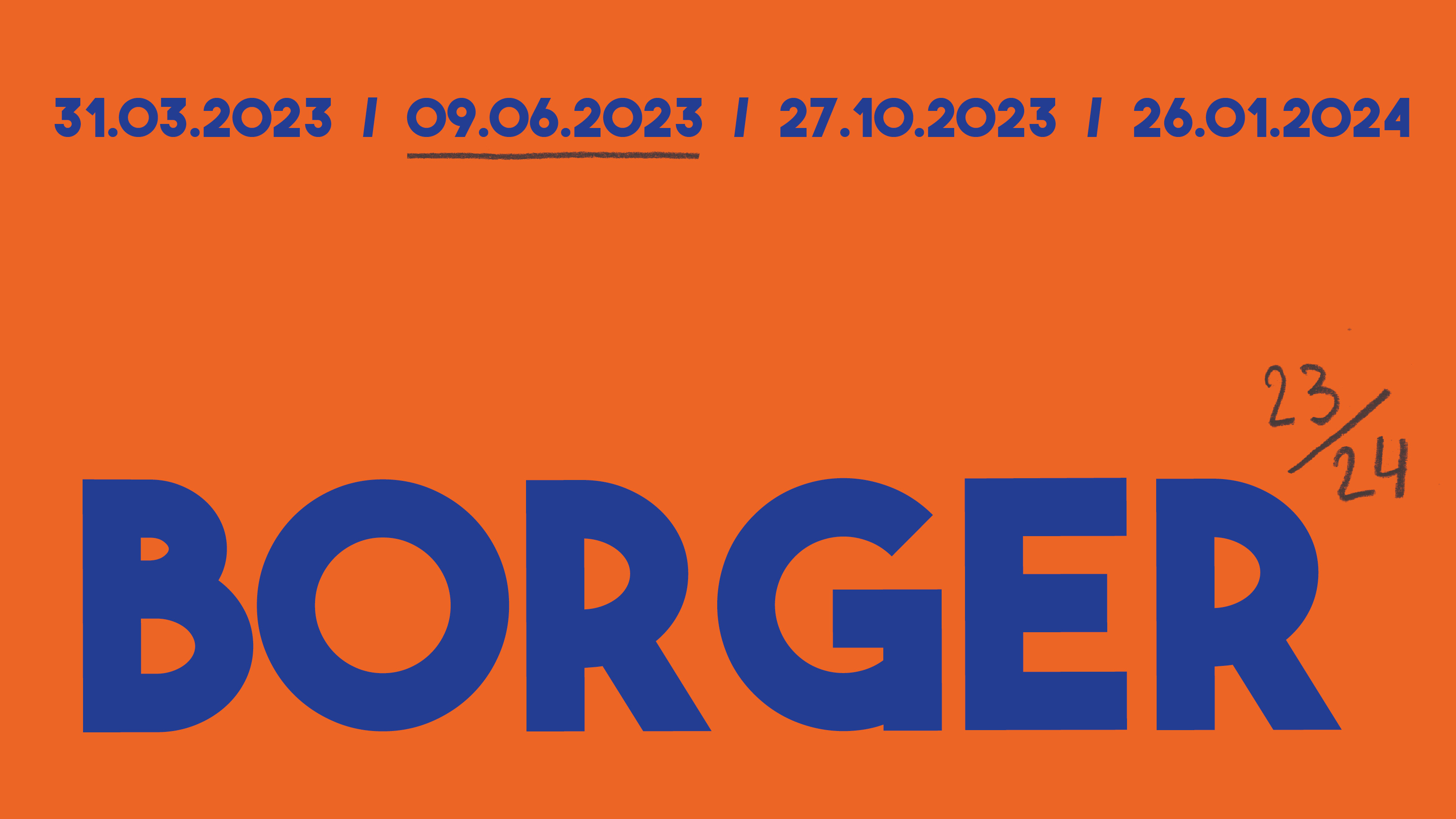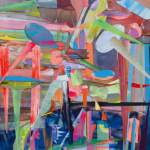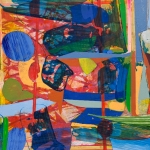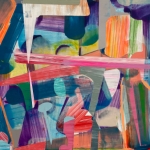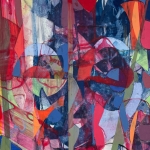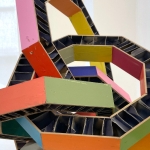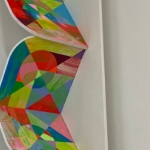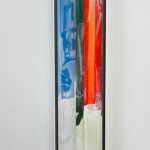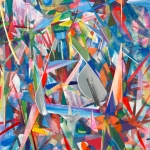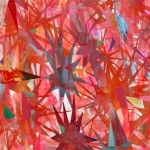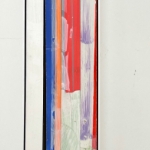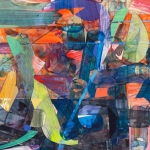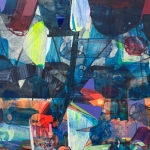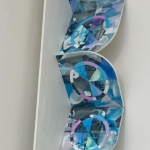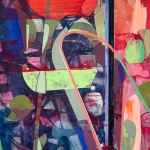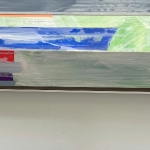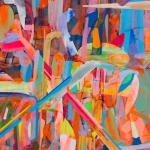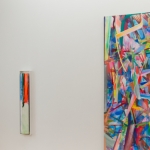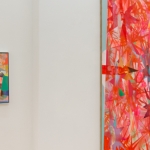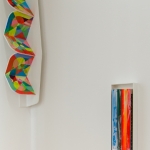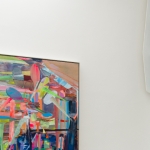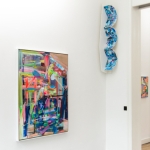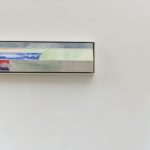JOHANNES ULRICH KUBIAK
'array of primitive values'
18 May - 17 June 2023

Eva Steynen.Deviation(s) is pleased to present the second individual exhibition of Johannes Ulrich Kubiak at our gallery.
For the occasion Hans Theys, art-historian and philosopher, wrote about Kubiak's oeuvre.
Yesterday I visited the studio of Johannes Ulrich Kubiak (b. 1961), an artist from Berlin who came to live in Antwerp five years ago. First he shows me works that have been created over the past three years: paintings with acrylic paint on canvas, created from pencil lines that mostly form triangles or stars. This creates fields that are filled in with different colours: a fragmented surface that obtains pictorial depth due to the varying density of the colours. Sometimes a slightly tinted transparent layer is added, softening the colors with a milky mist. Some surfaces seem to have been painted with a brush, bordered by tape. Sometimes the paint is applied with a painter’s knife to blend two colors together or create an opaque, thicker texture that gives the impression of standing out or hovering in front of a receding space. Sometimes we find a wiry texture on top, applied with a rounded, flat brush.
Somewhere in the room hangs a vertical painting that reminds me of an icon or a narrow stained glass window. Up close I see that the paint is applied to two obliquely cut strips of a door that have been glued together. The work is light-footed, elegant, minimal, compact, penetrating. It appeals to me. It evokes many images, an atmosphere, a form of concentrated attention. A little later I recognize two similar works in the studio. They’re still standing on the floor. I understand that they are in purgatory, as the concrete philosopher Walter Swennen calls it: the place where will be decided whether the thing can go to heaven (will be given a place in the oeuvre) or will be rejected as an unfortunate attempt.
Kubiak mainly uses four colors: white, cyan, magenta and yellow. Sometimes these colors are mixed to create orange, green, purple, gray or pink. I ask if he has a background as a printer. That turns out to be the case.
I get coffee. I hang around the studio for three hours. Jazz music plays continuously. We talk about my old hero Fassbinder. About the fantastic collections of German museums. Every now and then a name pops up, floating like a piece of driftwood in the midst of my thoughts: Jean-Paul Riopelle. I know it is a painter, mentioned in 2016 by Walter Swennen as an unknown artist he admires. I cannot picture the work of this painter, even though I know that I recently saw a beautiful painting by him in the Musée Matisse in Nice. I take out my iPhone and type his name. There is certainly a relationship with Kubiak’s work. It’s always nice to see that your body knows things you can’t consciously recall and politely brings them to the fore when it thinks you can use them.
In the meantime, Kubiak has also brought out some older works. They are beautiful watercolors in small, medium and large format (about the size of a human being). They are playful, transparent, airy. They consist of thousands of tiny streams, painted with the pointed end of a Chinese brush or blown with a compressor. There are also many spots. The paintings were made lying down, based on a pencil drawing that in turn was based on a cleaned-up photo of a church hidden behind scaffolding. The paintings are very spatial, architectural, but at the same time fluid and transparent. I understand that for the past three years Kubiak has tried to develop the spaciousness and transparency of these watercolors on paper with acrylic paint on canvas. Actually, they look like they were made by a man who unites Jackson Pollock and Piet Mondrian in himself. Would this be possible?
Suddenly I remember an anecdote I found in Francine Prose’s book about Peggy Guggenheim. In the summer of 1943, writes Prose, a jury selected a work by the 31-year-old unknown Jackson Pollock for an exhibition to take place in Guggenheim’s gallery. Peggy Guggenheim didn’t think much of the painting. She mentioned this to Piet Mondrian, who was staring at it. When she noticed twenty minutes later that he was still looking at the work, she went to stand next to him again, stating that this young painter clearly lacked discipline and seemed to have serious problems. At first Mondrian continued staring at the work, but then he turned to the gallery owner and said, “Peggy, I don’t know. I have a feeling that this may be the most exciting painting that I have seen in a long time, here or in Europe.”
Roughly speaking, there are two theories that explain the magical, superhuman effect of works of art.
The first theory was formulated with great certainty and consistency by the Argentinian seer Jorge Luis Borges, who stated that there was only one Nightingale, who assumed countless shadow forms on earth. The same was true of literature: there was only one writer. Some called him Homer, some called him, her, or them Virgil, Shakespeare, Chesterton, or Virginia Woolf, according to their point of view, but all the literary texts that took shape on earth rolled from the same mind and the same Platonic fingers.
According to the second theory, the idea of one solitary artist endlessly dividing himself cannot provide a satisfactory explanation for the diversity of all artistic artifacts. Could one Bach have composed all music, one Zeuxis all paintings? According to the proponents of this theory, only democratic decision-making and extensive regulation can guarantee true diversity.
Where can we find evidence for these theories? What observations are they based on? How could Plato know that eternal Forms existed? How do you prove that diversity can only be achieved through steering? Thus each theory raised new questions that have preoccupied our greatest thinkers for centuries.
Sometimes we see some light. Sometimes we witness a rare event that seems to bring us closer to the truth, for example when we are introduced to the work of a concrete artist: a man, woman or non-binary person who lives in this world, in this time, surrounded by materials and techniques that we know.
Could it be that painters in the ideal, Platonic world also work together as a duo? And that they arrive at new works, without too much regulation or democratic decision-making, that are executed here on earth by sensitive, searching, playful, hard-working artists such as Kubiak? The facts seem to indicate it.
Hans Theys, Montagne de Miel, 22 April 2023
Johannes Ulrich Kubiak (1961, lives and works in Antwerp) has exhibited since 1992 in numerous solo and group exhibitions in Germany, U.S., Austria, France, Belgium and The Netherlands. His work recently was on view in Antwerp (B), Positions Berlin (D) Art Rotterdam(NL), Art on Paper Brussels (B). His work is held in several private collections in Belgium and Germany, institutional collections incl. Deutsche Bank, Bundesbank, Kunstsammlung Sachsen, Berlinische Galerie.

